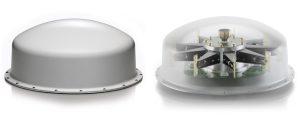
Every day we're surrounded by a multitude of devices and systems that use the same airwaves (like invisible highways in the sky) to communicate. These airwaves resemble busy road lanes - shared and limited resources. Devices such as mobile phones, Wi-Fi routers, radios, and even household appliances like microwave ovens all rely on these airwaves to function. Similar to the traffic on our roads, these airwaves have limited space, and the more devices and signals we pack into them, the more congested they become.
Think about a time when you've been on a call, and suddenly you couldn't hear the person on the other end, or your internet connection became slow and unreliable. This is often caused by RF interference - like too many people trying to talk at the same time on a crowded street corner.
For most people, this interference might not be a big deal when it disrupts a call or slows down a webpage. But consider this:
Think about a factory that relies on mobile networks, like 5G, to control its machines and production processes. If the network becomes unreliable due to interference, the machines can't work in harmony, and the production process may come to a halt.

You are probably wondering, how does this affect you?
The Impact of RF Interference on Communication
When a factory or industry experiences downtime due to network interference, it's not just an inconvenience - it's costly. Imagine if this factory produces the parts for the cars you drive, the phones you use, or the food you eat. If their production grinds to a halt, it can lead to delays in getting those products to you, and in some cases, shortages.
These disruptions can ripple through the supply chain and affect the availability and prices of goods. So, the interference that initially seems like a minor annoyance on your smartphone can have a domino effect, impacting the availability and affordability of the products and services you rely on daily.
Detecting and Locating RF Interference
To solve this problem of RF interference detection, RF engineers need to find the sources of interference. Imagine it as a game of "hide and seek" with rogue signals. There are two main methods they use to find these signals:
Angle of Arrival (AOA): This is a bit like being a detective trying to figure out where a sound is coming from. Just as you can tell if someone is talking to your left or right by listening carefully, AOA helps pinpoint the direction from which a signal is arriving. It's like turning your head to find out which direction a mysterious voice is coming from in a crowded room.
Time Difference of Arrival (TDOA): Now, let's consider TDOA as another detective at work. Imagine you hear two different sounds at slightly different times. You can use this time gap to estimate the source's location. TDOA does something similar but with signals. It measures how long it takes for a signal to reach different receivers. By comparing these arrival times, we can determine where the signal originated. It's like identifying the location of a car honking its horn by listening to when you hear the honk from different spots.
Sometimes, it's even better to use a mix of both methods because they have their own strengths and weaknesses. It's a bit like having multiple tools in your toolbox to tackle different problems as each method has its strengths and weaknesses.
AOA is excellent at pinpointing signals with a steady presence, like a loud radio playing music.
TDOA is more suited to finding signals that send short bursts or intermittent transmissions, like a car horn honking briefly.
Challenges in Urban RF Interference
In urban areas, a network of specialised equipment, including receivers and antennas, is established to monitor the airwaves and maintain the integrity of communication networks. At the core of this network lies the SignalShark system, an indispensable RF interference detection and mitigation solution in the ongoing battle against the challenges of RF interference. SignalShark plays a pivotal role in detecting and pinpointing unwanted signals, ensuring the smooth operation of RF communication systems, even amidst the most demanding and crowded urban environments. This advanced RF Signal Monitoring and Analysis solution employs both the Angle of Arrival (AOA) and Time Difference of Arrival (TDOA) methods, leveraging their respective strengths to locate and eliminate interference effectively. It's like using both your eyes and ears to find a hidden object - sometimes one is better than the other.

When dealing with interference in bustling cities, the task becomes increasingly complex. Signals tend to reflect off buildings, making them challenging to trace. RF Engineers employ advanced technology mounted on vehicles to navigate the city and precisely identify these signals. This process is like using a high-tech radar system, like the Automatic Direction Finding Antenna (ADFA), on a vehicle to pinpoint the sources of interference.
ADFA, when integrated with SignalShark, transforms a vehicle into a mobile interference detection unit, capable of navigating the complex urban landscape and providing precise information about the location and elevation of unwanted RF interference signals. It's akin to having a high-tech radar-guided telescope that aids RF engineers in their mission to maintain clear and uninterrupted communication channels, even in the most challenging urban environments.

In some cases, locating RF interference requires getting even closer to the source, much like pinpointing the house from which a loud party emanates in a neighbourhood. In such scenarios, handheld devices with specialised antennas come into play, and the SignalShark system takes centre stage. SignalShark's exceptional capabilities transform these handheld devices into super-sensitive 'interference detectors,' similar to a finely-tuned microphone guiding engineers with precision.
In conclusion, RF engineers rely on the Narda SignalShark family of devices for the detection and elimination of RF interference. These advanced solutions for detecting and mitigating RF interference stand as indispensable allies in their mission to maintain seamless communication systems. Equipped with state-of-the-art technology and an impressive versatility that enables them to proficiently handle a broad spectrum of frequencies, ranging from 8 kHz to 8 GHz, these RF interference detection and mitigation solutions, function discreetly in the background. They tirelessly conduct real-time monitoring and in-depth analysis of the electromagnetic spectrum In the face of disruptions, they swiftly identify and neutralise sources of interference.
The importance of these devices cannot be overstated. In an era where our dependence on wireless communication grows daily, the Narda SignalShark family of devices plays a pivotal role in ensuring that the web of connections remains unbroken. They are the secret weapons of RF engineers, safeguarding the invisible threads that weave our interconnected world together.